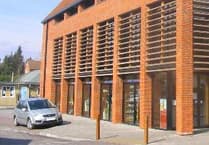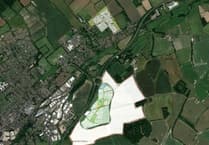BUTSER Ancient Farm welcomed royalty last Tuesday when the Duke of Gloucester opened its new Roman garden and mosaic.
The event coincided with the 20th anniversary of the construction of the farm’s Roman villa.
The addition was funded as a legacy in memory of long-term Butser volunteer Joan Rundle, who took great interest in Roman gardens and their plants.
The centrepiece of the garden – which includes sweet chestnut pergolas, stone benches, urns and raised flowerbeds – is a mosaic floor created during 300 hours of labour by volunteers using genuine Roman tesserae.
An estimated 10,000 tiles were uncovered and rescued during M4 construction work near Swindon in the 1970s.
Rachel Bingham, the creative developer who led the project, said a huge amount of work had gone into the labour of love. She added: “It’s been amazing to work on something we hope could itself last for thousands of years, just like the ancient Roman mosaics.”
The Duke of Gloucester, who has a strong interest in historic buildings, was given a tour of the fascinating site by Butser director Simon Jay.
Mr Jay was part of the original construction team and has seen the farm develop from a small research site to a centre welcoming more than 60,000 visitors a year.
He said: “I’m very proud of where the farm has developed to today and it’s fantastic to see the place continue to grow and expand as we bring the past to life.”
Garden volunteer Kathryn Bingham said it was fascinating to research the plants the Romans brought to the British Isles.
She said: “One of my favourite features is the Rosemary hedging, not only because it smells beautiful and attracts bees and butterflies, but it was an important herb in Roman times and was known as the herb of memory.”




